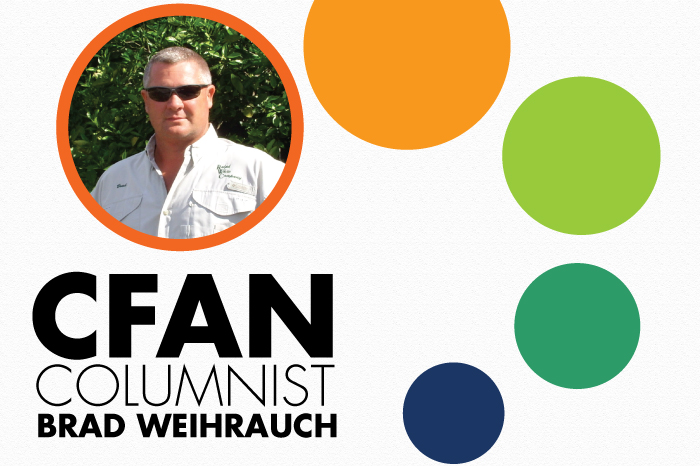Florida’s citrus industry has survived hurricanes and canker, freezes and nematodes. Yet, nothing has been as challenging as citrus greening, also known as Huanglongbing (HLB). [emember_protected custom_msg=”Click here and register now to read the rest of the article!”]
Since the disease snuck into the state in 2005, growers have invested $70 million in private funds to eradicate it. They have had some success in controlling the Asian psyllid that spreads it, yet citrus trees are dying. The industry is in peril.
We may feel like complaining. We may worry about the future. But what we need to do is decide if we are in or out of this business. If we decide to stay, we can’t play by the old rules.
Don’t expect your trees to produce for 50 years like they did before greening. Trees aren’t living that long. Equipment doesn’t last as long as it used to, fuel costs are higher, and chemical costs are, frankly, out of control. Your investment costs will fluctuate. Don’t depend on buying trees at the last minute. Citrus nurseries are booked; reset trees are scarce.
But know that many groves in South Florida, where HLB originally was discovered in this state, are stabilizing. Production levels at some groves are increasing.
So if you’re in this new citrus industry, don’t expect to “ride the ridge” like you did in prior years. Be involved in your grove and daily operations. Have a positive attitude and communicate with others outside our area about what works— and what doesn’t.
CREDITS
column by BRAD WEIHRAUCH
BIO: Brad Weihrauch is a Polk County native. He grew up around a family business of agriculture and customer service. After Winter Haven High School, he went on to complete his education at Polk Community College and Warner Southern. After serving 17 years in customer service for a large retailer, Weihrauch returned to his agriculture roots and founded RWC, an agri-service and management company, in 2002.[/emember_protected]

